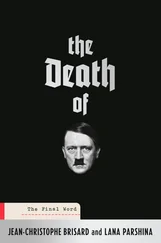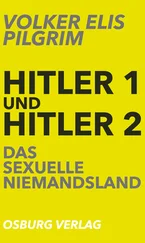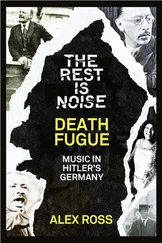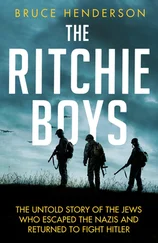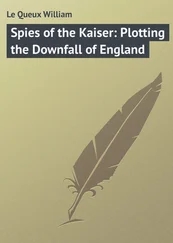21. Freya von Moltke, qtd. in Meding, Mut, 135.
22. Heinrich Stehkämper, Protest, Opposition, und Widerstand im Umkreis der (untergegangenen) Zentrumspartei: Ein Uberblick part 2, in Der Widerstand gegen den Nationalsozialismus: Die deutsche Gesellschaft und der Widerstand gegen Hitler, ed. Jürgen Schmädecke and Peter Steinbach (Munich, 1986), 895. See also Peter Hoffmann, Widerstand, Staatsstreich, Attentat: Der Kampf der Opposition gegen Hitler, 3rd ed. (Munich, 1979), 444. Moltke’s remark about “that Goerdeler mess” appears only in his next-to-last letter from prison, but it hints at the reservations that always existed.
23. Marion von Yorck von Wartenburg, qtd. in Meding, Mut, 203.
24. Qtd. in Christian Müller, Oberst i.G. Stauffenberg: Eine Biographie (Dusseldorf, 1990), 368. For the letter to Lionel Curtis, see Klemens von Klemperer et al., Fur Deutschland: Die Manner des 20. Juli (Frankfurt and Berlin, 1994), 170-71.
25. Qtd. in Hermann Graml’s groundbreaking study “Die aussenpolitische Vorstellungen des deutschen Widerstands,” Schmitthenner and Buchheim, Widerstand, 15 and 22.
26. Graml, “Vorstellungen,” 40.
27. Van Roon, Neuordnung, 271. See also Hassell, Hassell-Tagebücher, 335-36 (entry of Jan. 22, 1943). The comment about a “Kerensky solution” refers to Alexander F. Kerensky, the prime minister of Russia after the Russian Revolution of February 1917, whose halfhearted policies seeking compromise solutions cleared the way for the Bolsheviks. Conceivably Moltke thought that Goerdeler would be a transitional figure who would clear the way for the Kreisauers.
28. Rothfels, Opposition, 187.
29. Hans Bernd Gisevius, Bis zum bittern Ende (Zurich, 1954), 455.
30. Gisevius, Ende, 471.
31. Deutsch, Verschwörung, 385-86; see also Oscar Reile, Geheime Westfront: Die Abwehr, 1935-1945 (Munich, 1962), 387.
32. Höhne, Canaris, 291.
1. Karl Klee, Das Unternehmen “Seelöwe” (Gottingen, 1985), 189-90.
2. Franz Halder, Kriegstagebuch: Tägliche Aufzeichnungen des Chefs des Generalstabs des Heeres, 1939-1942, 3 vols. (Stuttgart, 1962-64), vol. 2, 121. For the conversation with Jodl, see vol. 1, 996 (Dec. 17, 1940); for the comment to Mussolini, see vol. 1, 275 (Jan. 20, 1941). That preparations for a war against the Soviet Union were quite open is evidenced in the fact that Hassell heard about them as early as the beginning of August (Die Hassell-Tagebücher, 1938-1944: Aufzeichnungen vom anderen Deutschland, ed. Friedrich Hiller von Gaertingen, rev. and exp. ed. [Berlin, 1988], 206 [entry of Aug. 10, 1940]).
3. Halder, Kriegstagebuch, vol. 2, 335ff.
4. Gerhard Ritter, Carl Goerdeler und die deutsche Widerstandsbewegung (Stuttgart, 1954), 323. For Jodl’s statement at Nuremberg, see Prozess gegen die Hauptkriegsverbrecher vor dem Internationalen Militärgerichishof Nurnberg, 14. November 1945-1. Oktober 1946 (Nuremberg, 1949), vol. 15, 339.
5. The meeting, described by Ulrich Hassell, took place on April 8, Hassell-Tagebücher, 248 (entry of May 4, 1941). For the guidelines themselves, see Hans-Adolf Jacobsen, “Kommissarbefehl und Massenexekutionen sowjetischer Kreigsgefangener,” Anatomie des SS-Staates, by Hans Buchheim et al. (Olten and Freiburg, 1965), vol. 2, 223-24 and 225ff.
6. Archiv Peter, ed., Spiegelbild einer Verschwörung: Die Kaltenbrunner-Berichte über das Attentat vom 20. Juli 1944 (Stuttgart, 1961), 368.
7. Bodo Scheurig, Henning von Tresckow: Eine Biographie (Dusseldorf, 1970), 70.
8. Scheurig, Tresckow, 84.
9. Rudolph-Christoph von Gersdorff, Soldat im Untergang: Lebensbilder (Frankfurt and Berlin, 1979), 87.
10. Gersdorff, Soldat, 87ff. Gersdorff records many further vivid details. The inkwell scene was probably meant figuratively.
11. See Hans-Adolf Jacobsen, “Kommissarbefehl,” 153, and Heinrich Uhlig, “Der verbrecherische Befehl,” Die Vollmacht des Gewissens (Berlin and Frankfurt, I960), vol. 2, 320ff. Christian Streit takes a more critical view of the generals in Keine Kameraden: Die Wehrmacht und die sowjetischen Kriegsgefangenen, 1941-1945 (Stuttgart, 1978), 83ff. Gersdorff wrote in the army group war diary: “In all longer conversations with officers, I was eventually asked about the shooting of Jews, without my having mentioned them in any way. I got the impression that virtually the entire officer corps opposed the shooting of Jews, prisoners, and commissars. They opposed the shooting of commissars especially because it strengthened the enemy’s will to fight. The shootings are seen as a blot on the honor of the German army and especially of the German officer corps” (qtd. in Peter Hoffmann, Widerstand, Staatsstreich, Attentat: Der Kampf der Opposition gegen Hitler, 3rd. ed. [Munich, 1979], 334). For Arthur Nebe, see Hermann Graml, “Die deutsche Militäropposition vom Sommer 1940 bis zum Frühjahr 1943,” Vollmacht des Gewissens, vol. 2, 442. Gersdorff said he noticed that Nebe carried out the ordered mass executions much more often than he admitted to the army group.
12. Hassell, Hassell-Tagebücher, 256 (entry of May 29, 1941).
13. The staff officer was Friedrich Olbricht (Süddeutsche Zeitung, Aug. 7, 1986). See Heinz Boberach, ed., Meldungen aus dem Reich: Auswahl aus den geheimen Lageberichten des Sicherheitssdienstes der SS, 1939-1944 (Neuwied and Berlin, 1965), 155ff. See also Marlis G. Steinert, Hitlers Krieg und die Deutschen: Stimmungen und Haltung der deutschen Bevölkerung im Zweiten Weltkrieg (Dusseldorf and Vienna, 1970), 206ff, which cites the observation of the chief public prosecutor of Bamberg that “much of the population was still incapable of understanding that Germany would assume the role in the world as the leading country in Europe through the direct absorption of the eastern territories.”
14. Horst Mühleisen, ed., Helmuth Stieff: Briefe (Berlin, 1991), 127 (Sept. 5, 1941) and 138 (Nov. 24, 1941); Hans Meier-Welcker, Aufzeichnungen eines Generalstabsoffiziers, 1939-1942 (Freiburg, 1982), 121. The pogrom in Kovno, ordered by Heydrich, took place between June 25 and June 29, 1941.
15. See the extensive description in Gersdorff, Soldat, 96ff. Gersdorff, too, reported the incident to the OKH. A notation on the original document indicates that it was shown to Brauchitsch, although after the war he claimed he could “not remember anymore.”
16. Hitler’s Table Talk, 1941-1944 (London, 1953), 44.
17. See Gersdorff, Soldat, 84 and 99; for Stauffenberg, see Christian Müller, Oberst i.G. Stauffenberg: Eine Biographie (Dusseldorf, 1970), 203-04. For the importance of the mass murders in the East as a motivation for the resistance, see also the so-called Kaltenbrunner reports, Spiegelbild, 424ff.
18. Mühleisen, Stieff, 123 (Aug. 23, 1941): “This bloody amateurism, which is still supported by such glorious representatives as Keitel and Jodl, may well, God knows, cost us the war.”
19. Hassell, Hassell-Tagebücher, 278 (entry of Oct. 4, 1941).
20. Hassell, Hassell-Tagebücher, 280 (entry of Nov. 1, 1941).
21. Peter Bor, Gespräche mit Halder (Wiesbaden, 1950), 214.
22. See Gersdorff, Soldat , 93 ; Henry Pickler, Hitlers Tischgesprache im Führerhauptquartier, 1941-1942 (Stuttgart, 1965), passim; and Werner Jochmann, ed., Adolf Hitler: Monologe im Führerhauptquartier, 1941-1944 (Hamburg, 1980), passim.
Читать дальше
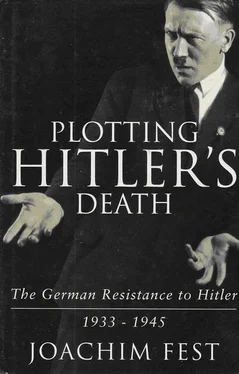
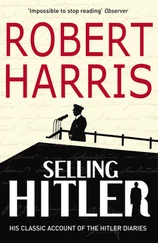
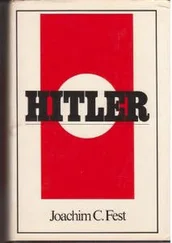
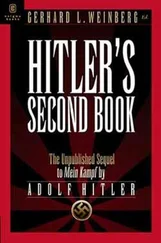
![Traudl Junge - Hitler's Last Secretary - A Firsthand Account of Life with Hitler [aka Until the Final Hour]](/books/416681/traudl-junge-hitler-s-last-secretary-a-firsthand-thumb.webp)
